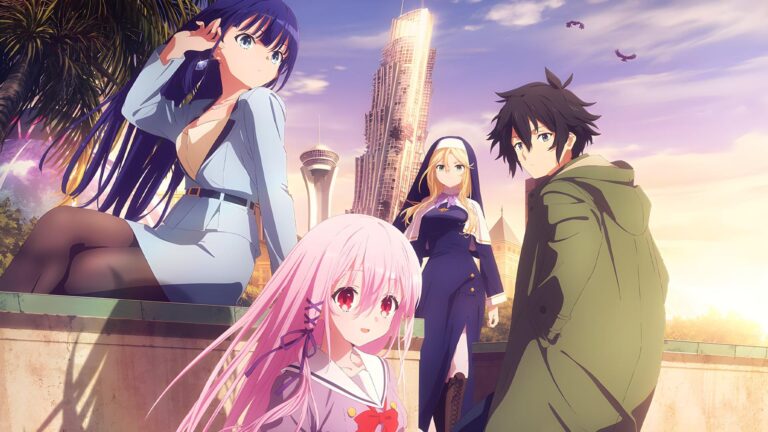The History and Origins of Valentine Day: A Fascinating Look into the Most Romantic Holiday
Love is in the air! With Valentine Day just around the corner. It’s time to delve into the fascinatin`g history and origins of this most romantic holiday. From ancient legends to modern-day celebrations, Valentine’s Day has captured hearts across the globe for centuries. So grab a box of chocolates and get ready to fall head over heels as we explore the captivating story behind this beloved day of love. Whether you’re a hopeless romantic or just curious about how it all began,. Join us on this enchanting journey through time and discover why Valentine’s Day remains an enduring symbol of affection and devotion.
The Legend of St. Valentine
The Legend of St. Valentine, shrouded in mystery and romance. Forms the foundation of Valentine’s Day as we know it today. While there are multiple accounts and theories surrounding this legendary figure, one thing remains constant: his unwavering commitment to love.
One popular tale traces back to ancient Rome during the reign of Emperor Claudius II. It is said that Valentine, a Christian priest, defied the emperor’s decree prohibiting marriage for young soldiers. Believing that single men made better warriors, Claudius sought to maintain a strong army by discouraging love and marriage.
Valentine, however, believed in the power of love and secretly performed marriages for young couples in defiance of Claudius’ orders. When his actions were discovered, he was sentenced to death but not before Leaving behind. A heartfelt letter signed “Your Valentine” – an expression still used today when declaring affection on this special day.
Another version suggests that St. Valentine was imprisoned for aiding persecuted Christians and fell in love with the jailer’s daughter while awaiting execution. Before his death sentence was carried out on February 14th (the date now celebrated as Valentine’s Day). He sent her a note signed with those famous words: “From your Valentine.”
While historical records may be scarce regarding the true identity or deeds of St. Valentine(s). It is clear that his legacy has endured through centuries as a symbol of sacrifice and devotion. Reminding us all to cherish our loved ones every day but especially on this cherished holiday dedicated to matters of the heart.
Origins of Valentine’s Day: A Pagan Festival in February
Valentine’s Day, the most romantic holiday of the year, has a fascinating history that dates back centuries. Many people are unaware that its origins can be traced back to a pagan festival celebrated in ancient Rome.
In ancient Rome, the month of February was dedicated to Lupercalia, a fertility festival held on the 15th. During this time young men would draw names of eligible. Women from an urn and they would become partners for the duration of the festival. This ritual was believed to promote love and ensure fertility.
As Christianity spread throughout Europe, Pope Gelasius I sought to Christianize these pagan festivities. In order to replace Lupercalia with a more religiously significant celebration, he declared February 14th as St. Valentine’s Day.
Although there were multiple saints named Valentine who were martyred during different periods in history. It is widely believed that one particular saint St. Valentine of Terni – inspired this holiday. He was known for his acts of kindness and compassion towards couples in love.
Over time, St. Valentine became associated with romantic. Love and courtship due to his reputation as a patron saint for engaged couples and lovers seeking blessings for their relationships.
While some aspects of Lupercalia still lingered in early celebrations of Valentine’s Day – such as exchanging handwritten notes expressing affection. It gradually evolved into what we now know today: a day dedicated entirely to expressions and celebrations of love.
From its humble beginnings as a roman fertility festival to its transformation into an international symbol of romance and devotion. A Valentine’s Day holds deep historical significance rooted in both paganism and Christianity.
Valentine’s Day Meaning: A Day of Romance and Love
Valentine’s Day is not just another day on the calendar. It holds a special meaning for people all over the world. As it is celebrated as a day of romance and love. This special occasion allows couples to express their affection. For each other and serves as a reminder to cherish the bonds they share.
The meaning of Valentine’s Day goes beyond materialistic gestures or grand displays of affection. It is about taking time out from our busy lives to appreciate. And celebrate the love we have in our lives. Whether it be with a partner, family member, or close friend.
On this day, people exchange heartfelt messages, gifts, and tokens of love to show their appreciation. From handwritten love letters to thoughtful presents like flowers or chocolates, these small gestures carry immense significance. They serve as symbols of love and act as reminders that we are cherished by someone special.
Valentine’s Day also provides an opportunity for individuals to create lasting memories with their loved ones. Whether it’s planning a romantic dinner date or surprising them with an unexpected gesture of kindness. The goal is always to make them feel loved and valued.
Moreover, Valentine’s Day isn’t exclusively reserved for those in relationships. It can also be celebrated by single individuals. Who want to express self-love or show gratitude towards friends who have been there through thick and thin. It serves as a reminder that love comes in many forms and should be appreciated regardless.
In essence, Valentine’s Day carries deep meaning because. It reminds us of the importance of expressing our emotions honestly and openly. It encourages us to cultivate loving relationships with others while fostering self-love within ourselves too . So this February 14th remember: take some time out from your busy schedule – embrace love!
Who Is Cupid?
Who is Cupid? We’ve all seen the cherubic little figure with his bow and arrow. But do we really know who he is and why he’s so closely associated with Valentine’s Day? Let’s delve into the fascinating origins of this mythical character.
Cupid, also known as Eros in Greek mythology, is the god of love and desire. He was often depicted as a mischievous young boy with wings, armed with a golden bow and arrows. Legend has it that if Cupid strikes you with one of his arrows. You will fall deeply in love with the next person you see.
According to ancient stories, Cupid was the son of Venus, the goddess of love. His job was to inspire feelings of passion and desire in both humans and gods alike. In Roman culture, Cupid played a significant role not just during. Valentine’s Day but throughout the year as a symbol of romantic love.
The image we have today of Cupid as a playful angelic figure can be traced back to Ancient Rome. The Romans believed that by invoking Cupid’s influence on their relationships, they could ensure happiness and fulfillment in their unions.
Over time, this depiction evolved further – from being portrayed solely as an infantile deity to becoming more mature-looking while still retaining his trademark wings and bow. This transformation reflects how our understanding of love has changed over centuries – from innocent infatuation to deeper connections between adults.
Today, when we think about Valentine’s Day or romantic gestures. Like sending flowers or writing heartfelt letters to express our affections for someone special in our lives. It is hard not to picture cute little Cupids flying around spreading their magic dust everywhere!
Typical Valentine’s Day Greetings and Gifts
Valentine’s Day is a special occasion that gives us the opportunity. To express our love and affection for those who hold a special place in our hearts. One of the most common ways to do this is through heartfelt greetings and thoughtful gifts.
When it comes to Valentine’s Day greetings, there are endless options to choose from. From traditional handwritten cards filled with sweet sentiments, to modern e-cards and digital messages, the possibilities are abundant. Many people also opt for personalized messages or quotes that perfectly capture their feelings.
As for gifts, the choices range from classic to creative. Traditional gifts like flowers (especially roses), chocolates, and jewelry remain popular choices year after year. These timeless expressions of love never fail to make hearts flutter with joy.
However, some people prefer thinking outside the box when it comes to gift-giving on Valentine’s Day. They may surprise their loved ones with unique experiences such as spa treatments, romantic getaways. Cooking classes together – anything that creates lasting memories.
In recent years, homemade DIY gifts have also gained popularity. As they add a personal touch and show effort put into creating something truly special. Handcrafted crafts or photo albums bursting with cherished memories can be incredibly meaningful gestures.
No matter what form these greetings and gifts take on Valentine’s Day. Their purpose remains constant – they serve as tokens of love and appreciation for our partners or loved ones. It is an opportunity not only to celebrate romantic relationships but also friendships and family bonds.
So whether you choose a traditional card adorned with red hearts or go all out with an extravagant surprise gift. Remember that it’s your thoughtfulness behind each gesture that truly matters on this day dedicated to love.
Celebrations and Status Worldwide
Valentine’s Day is undoubtedly a global phenomenon, celebrated by people from all walks of life in various ways. From the bustling streets of New York City to the serene beaches of Bali. Love is in the air on February 14th.
In Western countries like the United States and Canada, couples exchange heartfelt cards, indulge in candlelit dinners. And shower each other with flowers and chocolates. It has become a day for grand gestures and romantic escapades.
In Latin American countries such as Mexico and Brazil, Valentine’s Day takes on a slightly different flavor. Known as “Dia del Amor y la Amistad” (Day of Love and Friendship), it emphasizes not only romantic. Love but also celebrates friendships with joyful gatherings among friends.
Meanwhile, in Asian cultures like Japan and South Korea, Valentine’s Day has its unique twist. On this day, women take charge by giving gifts to men they admire or are interested in. However, there is another holiday called “White Day” when men reciprocate their affection with presents.
Across Africa, Valentine’s Day celebrations vary widely depending on local customs and traditions. Some communities embrace the holiday wholeheartedly with vibrant festivals while others adopt more low-key approaches. Focusing on intimate moments shared between couples.
The Middle East often exhibits mixed sentiments towards Valentine’s Day due to cultural sensitivities surrounding public displays of affection. While some individuals choose to celebrate privately behind closed doors or within close-knit circles. Others may opt for alternative dates or find creative ways to express their love without compromising cultural norms.
No matter where you go around the globe on. Valentine’s Day —whether it be Paris or Toky one thing remains constant. This special occasion serves as a reminder that love knows no boundaries or borders.
Restrictions on Valentine’s Day in Some Countries
Valentine’s Day, a celebration of love and romance, is widely cherished across the globe. However, it may come as a surprise that in some countries, there are strict restrictions imposed on this day.
In certain conservative societies, such as Saudi Arabia and Iran. Celebrating Valentine’s Day is seen as a violation of cultural norms and religious beliefs. These countries have banned public displays of affection and the sale or exchange of any Valentine-related items.
The reasoning behind these restrictions stems from concerns about Western influence and the fear. That Valentine’s Day may promote immoral behavior or lead to social problems. Authorities often crack down on businesses selling red roses or heart-shaped chocolates during this time.
However, despite these limitations, people find creative ways to express their love privately. They might exchange gifts discreetly or celebrate in the comfort of their own homes.
These restrictions have sparked debates about personal freedom versus societal control. While some argue for preserving traditional values, others advocate for individual expression and choice.
Regardless of these constraints, love finds its way into people’s lives even amidst cultural barriers. Couples still find joy in expressing their affection for one another while respecting local customs and traditions.
It is important to remember that every country has its unique. Set of customs and regulations surrounding holidays like Valentine’s Day. Understanding these differences helps foster respect for diverse cultures around the world.
Modern Times and Cultural Significance
In modern times, Valentine’s Day has become more than just a celebration of romantic love. It has evolved into a cultural phenomenon. That transcends borders and brings people together in the name of affection and appreciation. The holiday is no longer restricted to couples; it now encompasses friendships, family bonds, and self-love.
Social media platforms play a significant role in shaping the way we celebrate Valentine’s Day today. People share their expressions of love through heartfelt posts, photos, videos, and even virtual gifts. This digital age allows us to connect with loved ones near and far. Making distance less impactful on this special day.
Valentine’s Day has also expanded its reach beyond traditional heterosexual relationships. It now embraces all forms of love – same-sex couples are celebrated just as passionately as any other couple. This inclusivity reflects our evolving societal norms and acceptance for diverse expressions of affection.
Furthermore, many businesses capitalize on the commercial. Aspect of Valentine’s Day by offering special discounts or promotions tailored for this occasion. From restaurants to flower shops to online retailers, everyone wants a piece of the Valentine’s market share.
Despite its commercialization, it is important not to lose sight of the true essence behind Valentine Day Expressing love and appreciation for those who hold a special place in our hearts. Whether you choose to celebrate with grand gestures or intimate moments shared between two individuals. What matters most is genuine connection and thoughtfulness.
As cultures continue to blend in today’s globalized world. So do the ways in which we celebrate Valentine’s Day around the globe. Each country puts its unique spin on this day dedicated to love. From exchanging handmade cards called “valentines” in America to gifting red roses symbolizing passion in Brazil.
Fun Facts and Trivia about Valentine’s Day
Did you know that Valentine’s Day has a rich history dating back centuries? Here are some fascinating fun facts and trivia to explore about this romantic holiday.
The oldest known valentine dates back to the 15th century: A love letter written by Charles, Duke of Orleans, to his wife while he was imprisoned in the Tower of London.
Approximately 150 million Valentine’s Day cards are exchanged each year. Making it the second most popular greeting card-giving occasion after Christmas.
The heart shape became associated with love and romance thanks to ancient Greeks who believed it was the source of all emotions.
In Finland, Valentine’s Day is called “Friendship Day,” focusing on celebrating friendships instead of romantic relationships.
Richard Cadbury, son of the founder of Cadbury chocolates, introduced decorated chocolate boxes for Valentine’s Day in the late 1800s.
In South Korea. They celebrate not only February 14th as a day for couples but also April 14th as “Black Day” when singles gather to eat black bean noodles together!
The tradition of giving red roses on Valentine’s Day evolved from their association with Venus, the Roman goddess of love and beauty.
On average, men spend twice as much money on gifts for Valentine’s Day compared to women!
More than one billion dollars’ worth of chocolate is purchased for this holiday in America alone!
And did you know that approximately nine million people buy their pets a gift for Valentine’s day?
These fun facts and trivia shed light on just how deeply ingrained this celebration is in our culture worldwide! So whether you’re exchanging heartfelt notes or indulging in sweet treats. Remember that there’s always more to discover about this enchanting holiday!
conclusion
Valentine’s Day is a holiday steeped in history and romance. From its origins as a pagan festival to its association with St. Valentine and the symbol of Cupid. This day has evolved into a worldwide celebration of love and affection.
Throughout the years, people have found creative ways to express their feelings on Valentine’s Day, from exchanging heartfelt greetings cards to giving flowers and chocolates. These traditions continue to be popular today, as couples around the world celebrate their love for one another.
However, it is important to note that not all countries embrace Valentine’s Day in the same way. Some nations impose restrictions on the holiday due to cultural or religious beliefs. Despite these differences, the spirit of love ultimately prevails.
In modern times, Valentine’s Day holds significant cultural significance as a day dedicated to expressing love and appreciation for our partners and loved ones. It serves as a reminder that we should cherish those who bring joy into our lives every day.
As we partake in this annual celebration of love and affection. Let us remember the fascinating history behind Valentine’s Day while also embracing its joyful present-day traditions. Whether you choose to shower your loved ones with gifts or simply spend quality time together. May this special day remind us all of the power of love in our lives.







